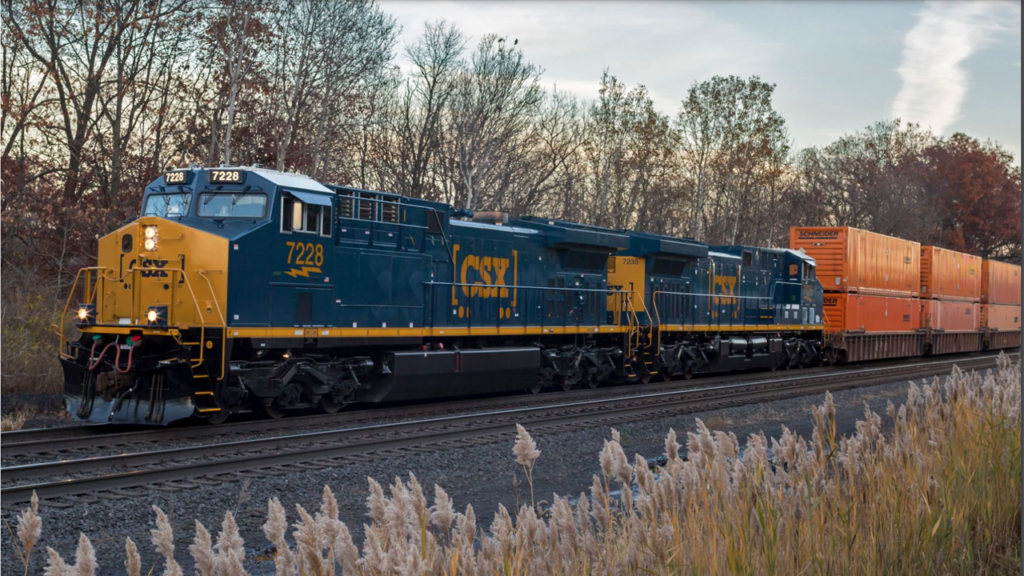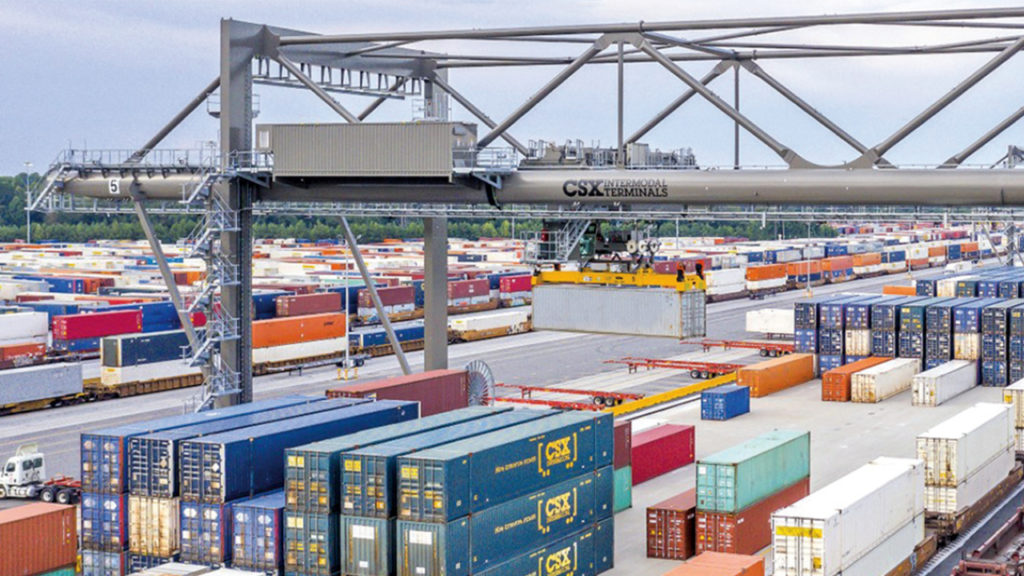
CEO PERSPECTIVE: Performance, Sustainability, Innovation Are Keys to Growing Market Share
Written by Jim Foote, President and CEO, CSX
Jim Foote, President and CEO, CSX
As part of a special series in Railway Age’s March 2022 issue, 11 North American railroad CEOs address what must be done to grow and gain market share from competing freight transportation modes. In the 4th edition of the series, Jim Foote, President and CEO of CSX, shares his perspective.
North American railroads lost market share to trucks over the past half century because shippers were willing to pay a premium for speed, reliability and customer service. The answer to how our industry can recapture a portion of the 80% of intercity freight that now moves by truck is to address the shortcomings that gave it away in the first place. We need to be faster, more reliable and easier to do business with.
Railroads have understood this for decades and grappled with how to reverse this trend. For the first time in the modern era, our industry is poised to fundamentally change the calculus and significantly grow rail’s market share.
Several factors are contributing to the unique opportunity this moment represents, including rail’s environmental advantage and the adoption of new customer service technologies, but let’s start with performance. At CSX, our business model has enabled us to take operating efficiency to a new level. In recent years, we set records for reliability while dramatically reducing transit times. And we are moving aggressively to convert truck-dominated business from highway to rail.

Granted, pandemic-related workforce challenges and supply chain disruptions have caused service metrics to decline from their 2019 highs, but the fundamentals remain firmly in place, and we’re confident we will soon regain and even surpass our previous performance levels. We have added hundreds of new train crew members, supply chain fluidity is returning, and we have continued to refine our operating plan to reduce car handling and balance the network.
Other railroads are adopting these fundamentals as well, and CSX welcomes the competition. Our industry is recognizing that fighting for a bigger share of a shrinking pie isn’t a winning strategy in the long term. Our future success lies not only in competing with other railroads, but also in competing against the trucking industry to dramatically increase the size of the railroad pie, and scheduled railroading helps us do that.
In addition to continuing to improve transit times and service reliability, a key component of the rail growth strategy is the use of technology to increase our value as a supply chain partner. At CSX, we’ve invested heavily in our ShipCSX customer service platform, and we’re continuing to develop and roll out new tools and capabilities.
These investments are helping customers see deeper into our shipment data so they can manage their operations more efficiently, as well as making it easier for them to look up rates, schedule service, and transact business. For railroads to maximize supply chain visibility, we need to cooperate more effectively on sharing shipment information and developing the technologies to support it.

Another factor in railroads’ favor is our inherent environmental advantage. Rail is three to four times more fuel efficient than trucks on average and produces 75% fewer greenhouse gas emissions. Ten years ago, that was primarily a useful talking point in public policy discussions. Today, it’s a substantial and growing business advantage.
In our conversations with customers, we’re increasingly asked about sustainability issues in general and how much, specifically, a given customer can reduce its carbon footprint by switching from truck to rail. The level of a company’s sustainability commitment impacts investor behavior as well as business decisions made by supply chain partners. CSX has moved aggressively to increase our environmental advantage over trucks by setting emissions reductions targets, employing fuel-saving technologies to achieve those goals, and developing tools for customers to calculate their emissions avoidance when they choose rail.
The rail industry’s success in fully exploiting these positive trends will require us to be more innovative than we have been in the past. At CSX, we’re developing new products that provide seamless dock-to-dock solutions and integrate value-added services, such as warehousing and product handling.
Improved performance, enhanced customer service, environmental advantages and business innovation—these are the keys to winning market share from the trucking industry, which is where the rail industry’s greatest growth potential lies. The circumstances are aligned to deliver a bright future for rail, and it’s up to us to take full advantage of this moment.
Read more of Railway Age’s special CEO Perspectives series:
• Katie Farmer, BNSF: Sustain a Growth Mindset
• Keith Creel, Canadian Pacific: Supply Chain, Market Reach and Sustainability
• JJ Ruest, CN: Railroads Must Lean Into Their Natural Strengths
• Pat Ottensmeyer, Kansas City Southern: Competing on a Global Scale
• Alan Shaw, Norfolk Southern: A Simple, Powerful Recipe for Growth
• Lance Fritz, Union Pacific: Solving Customer Problems at the Heart of Innovation
• Peter Gilbertson, Anacostia Rail Holdings: Growing With People
• Dan Smith, Watco: Stay Close to Your Customer
• Ian Jefferies, Association of American Railroads: A Growing Rail Industry Needs Policy Sanity
• Chuck Baker, American Short Line and Regional Railroad Association: Four Parallel Paths to Growth



